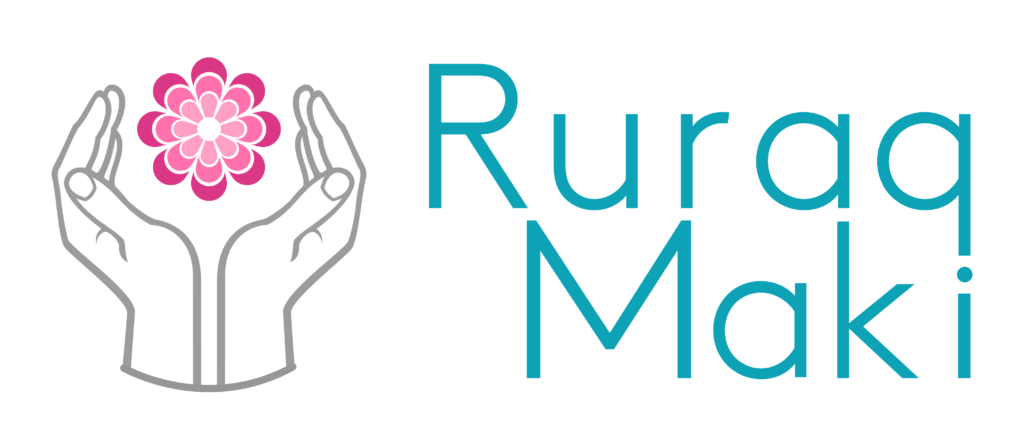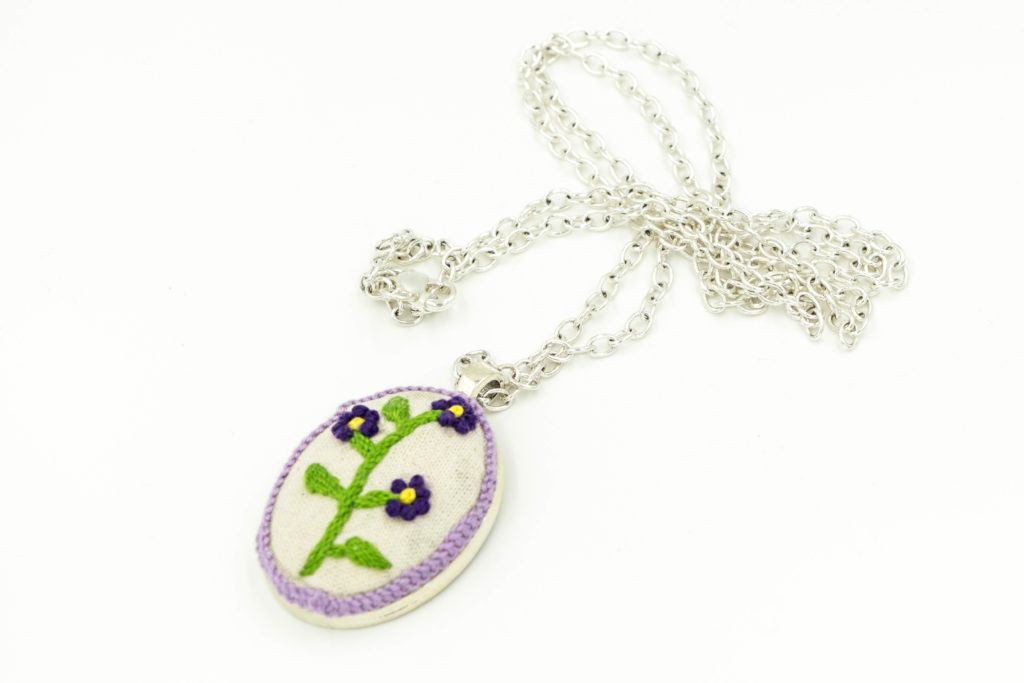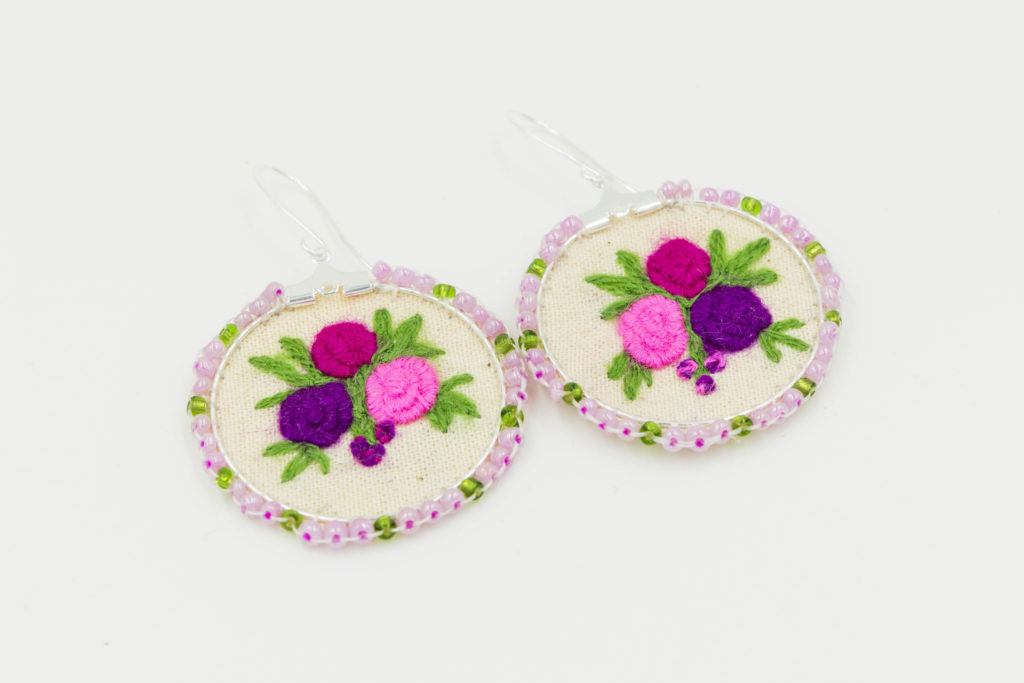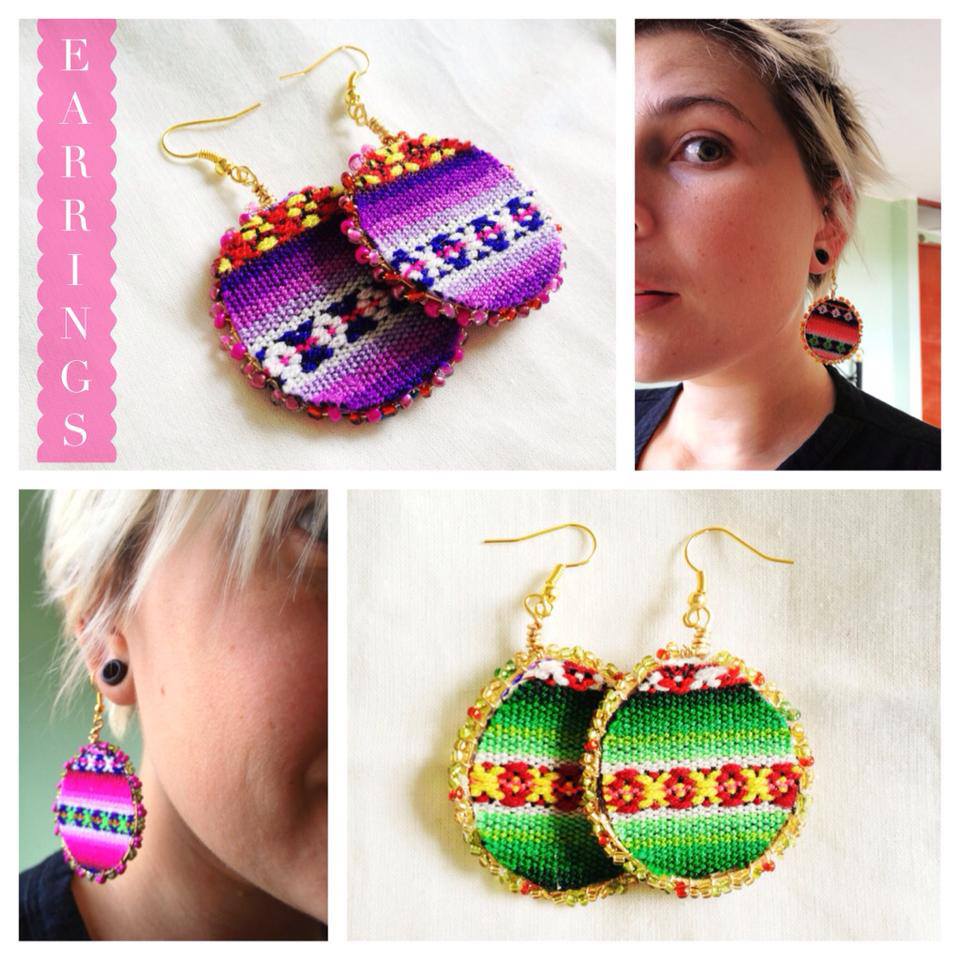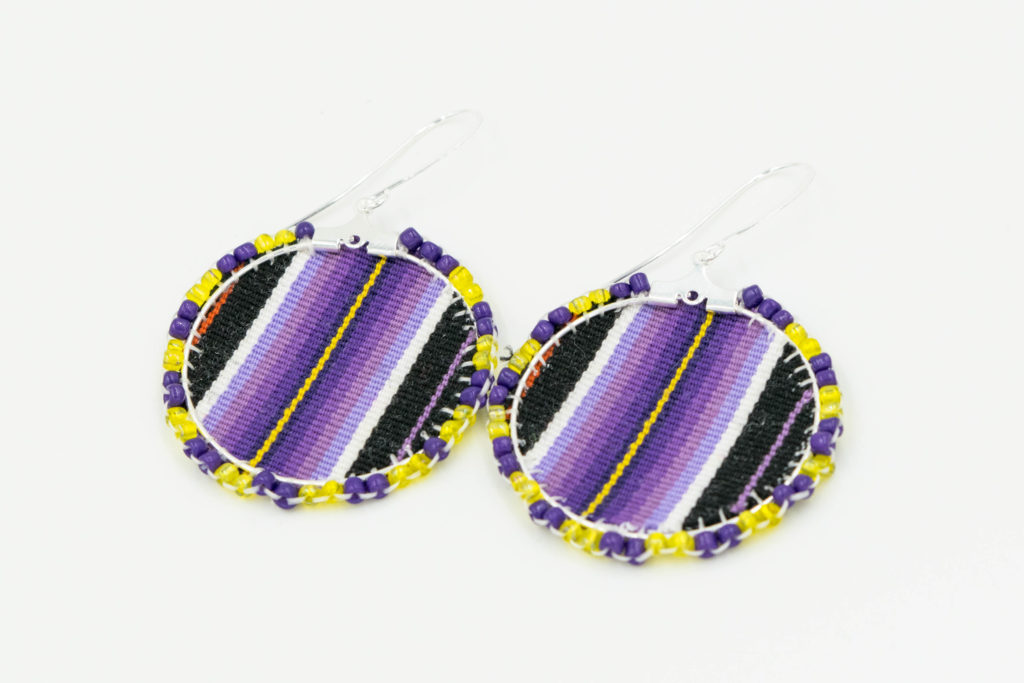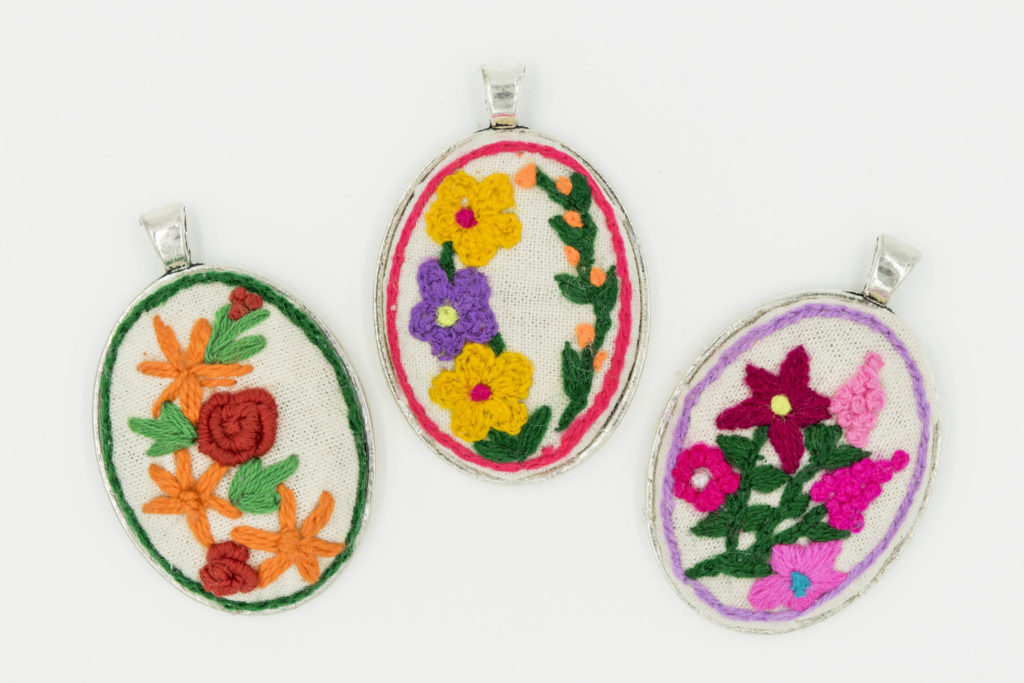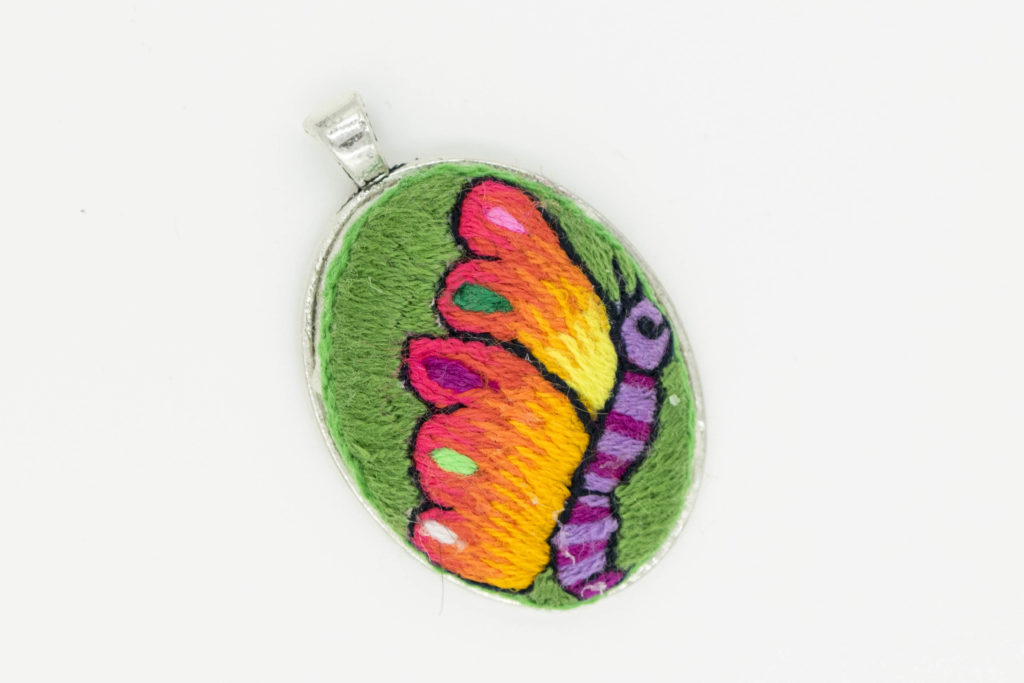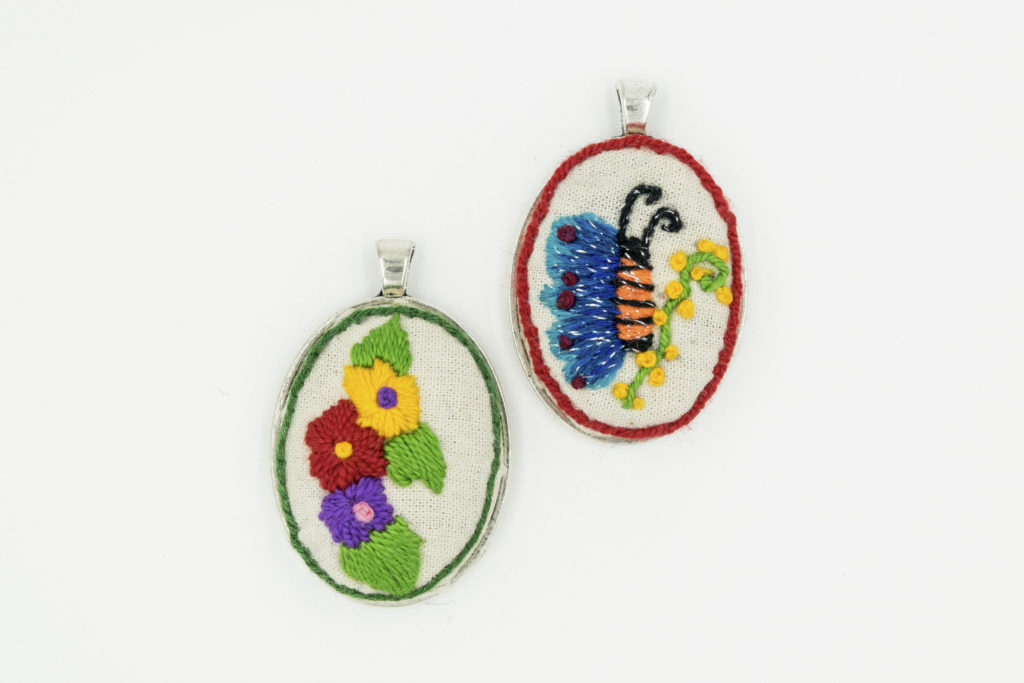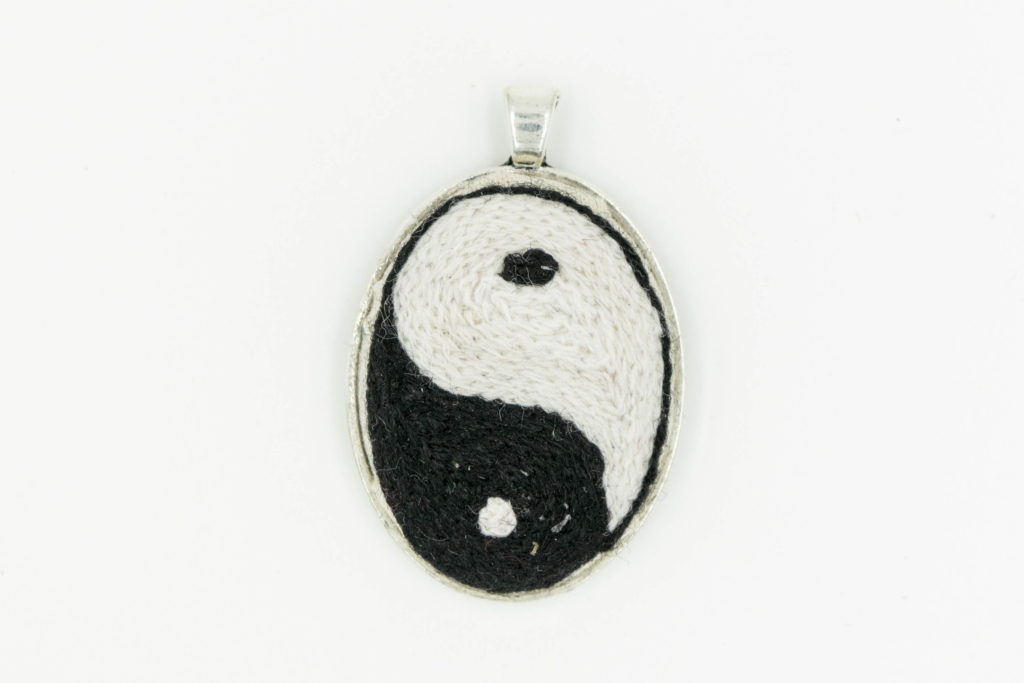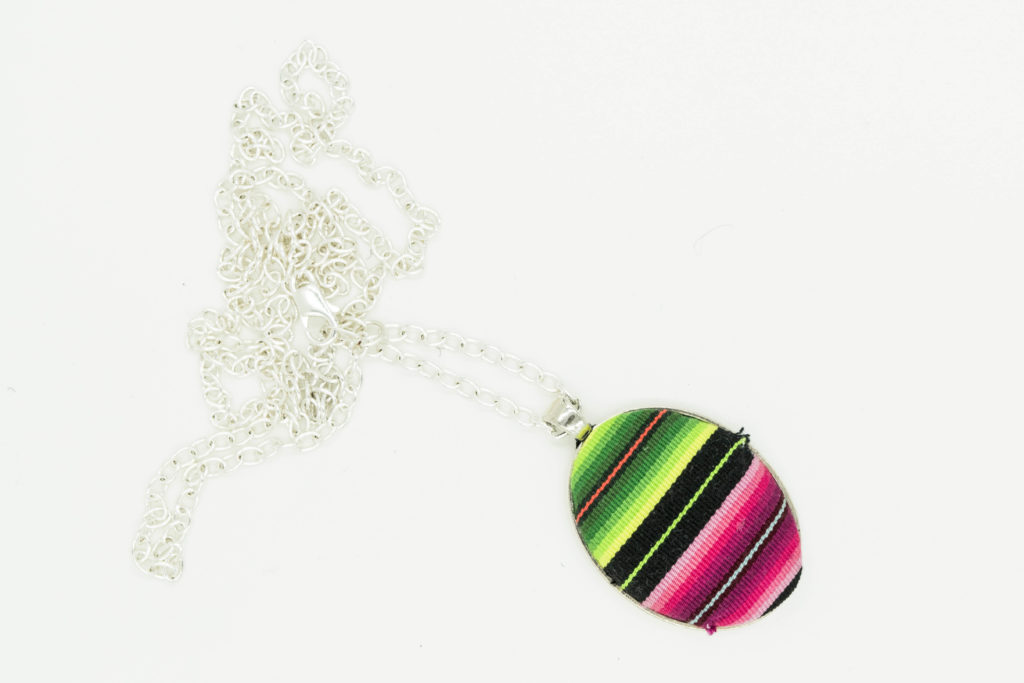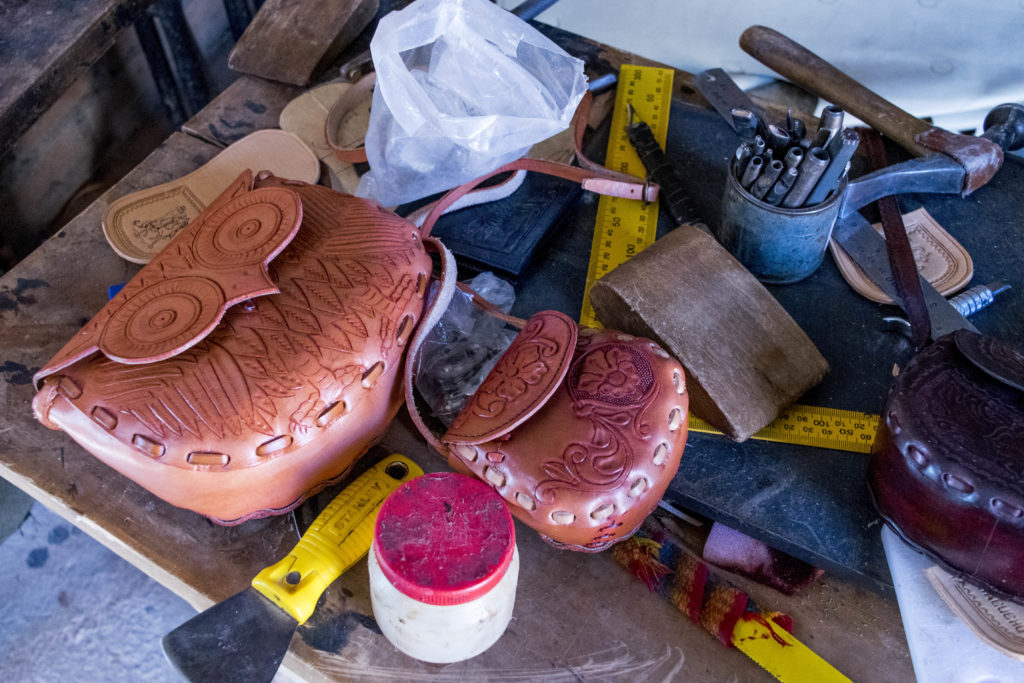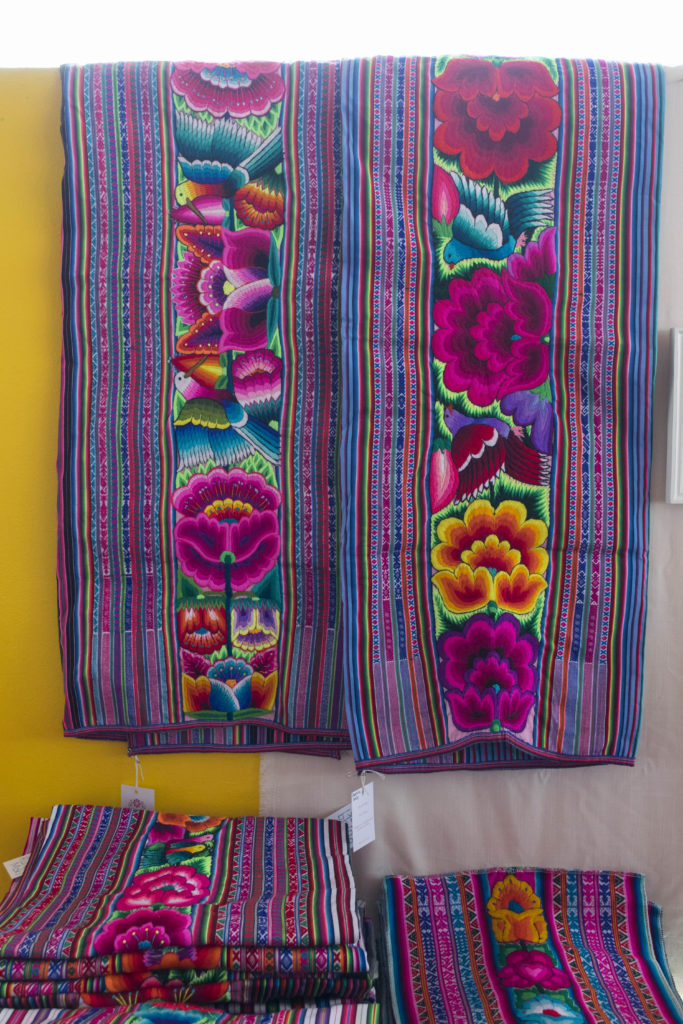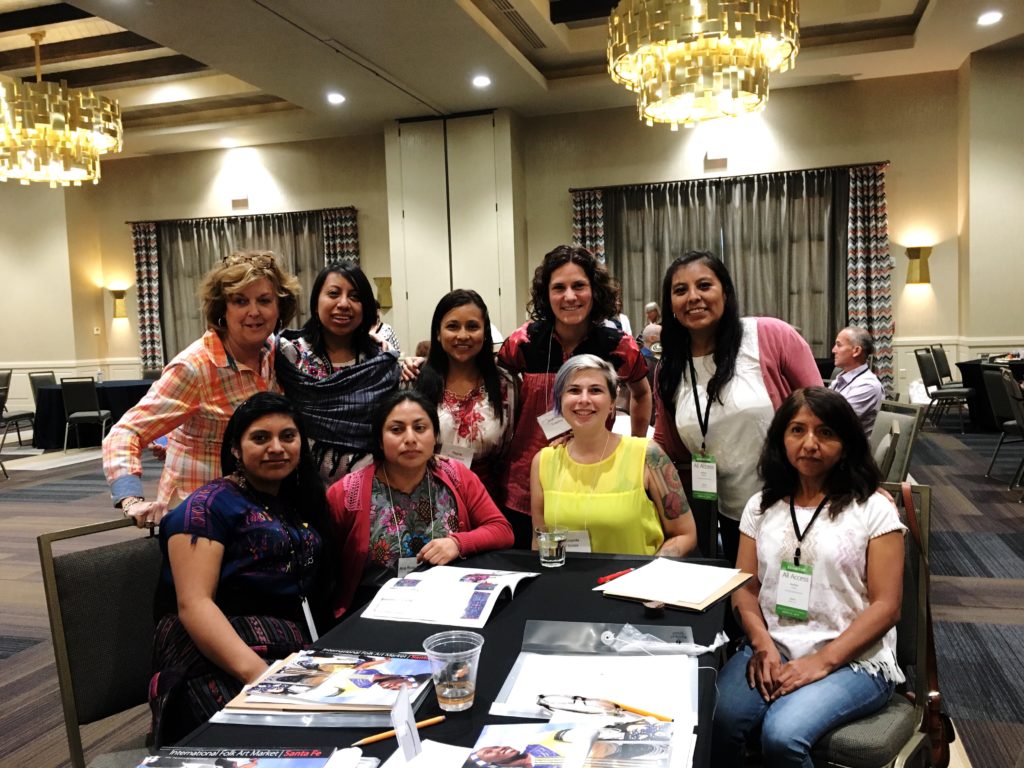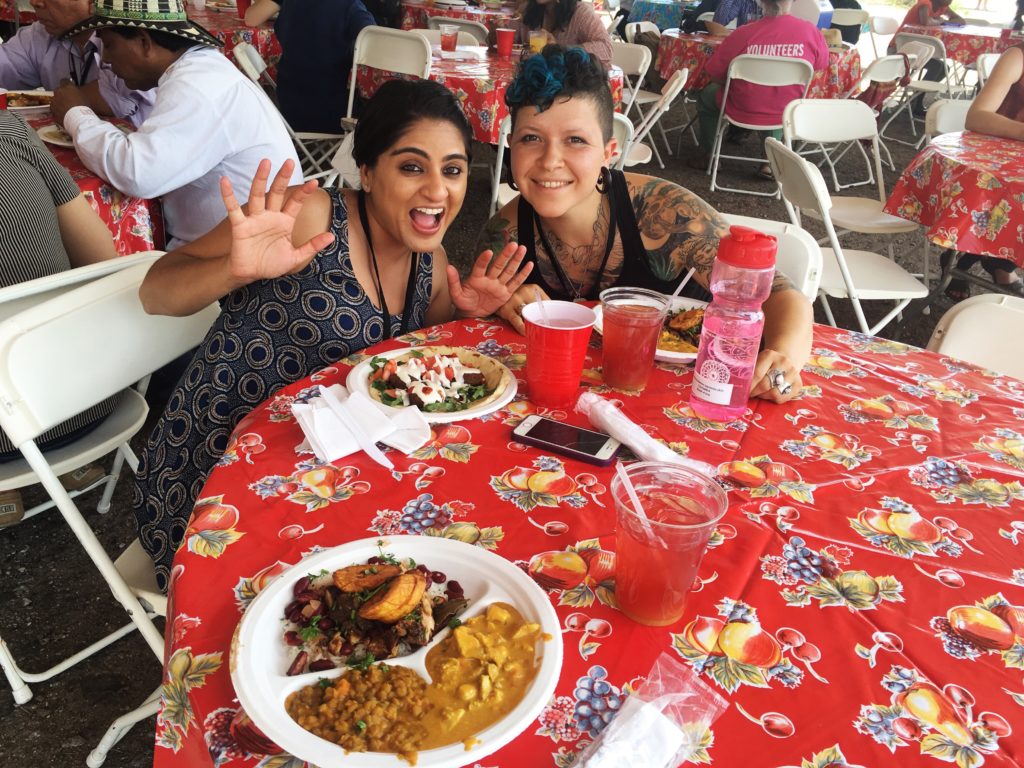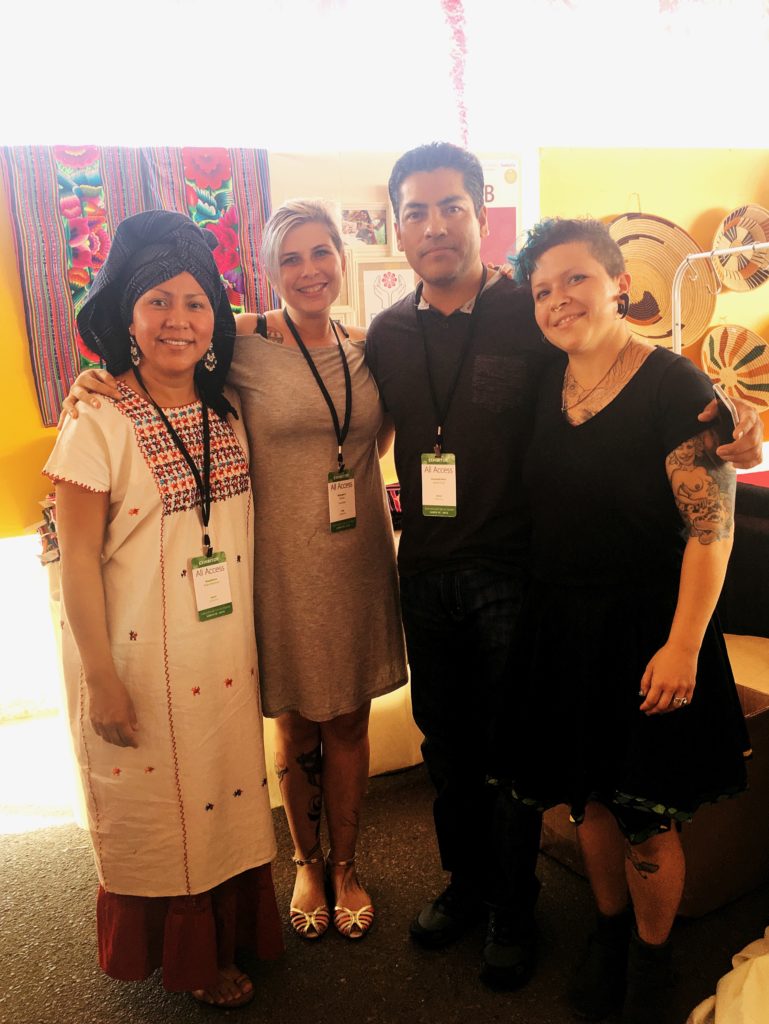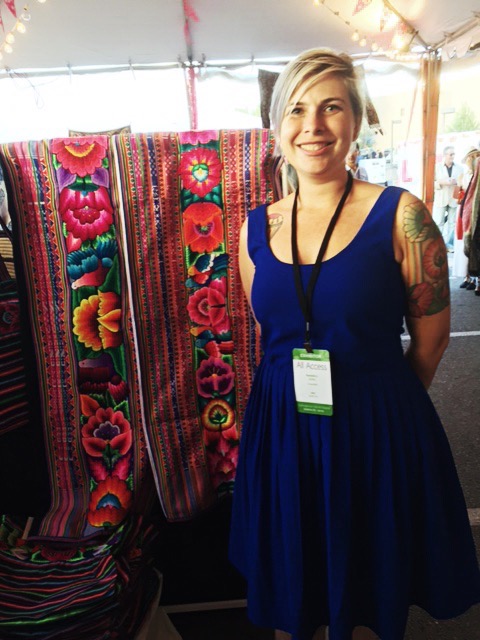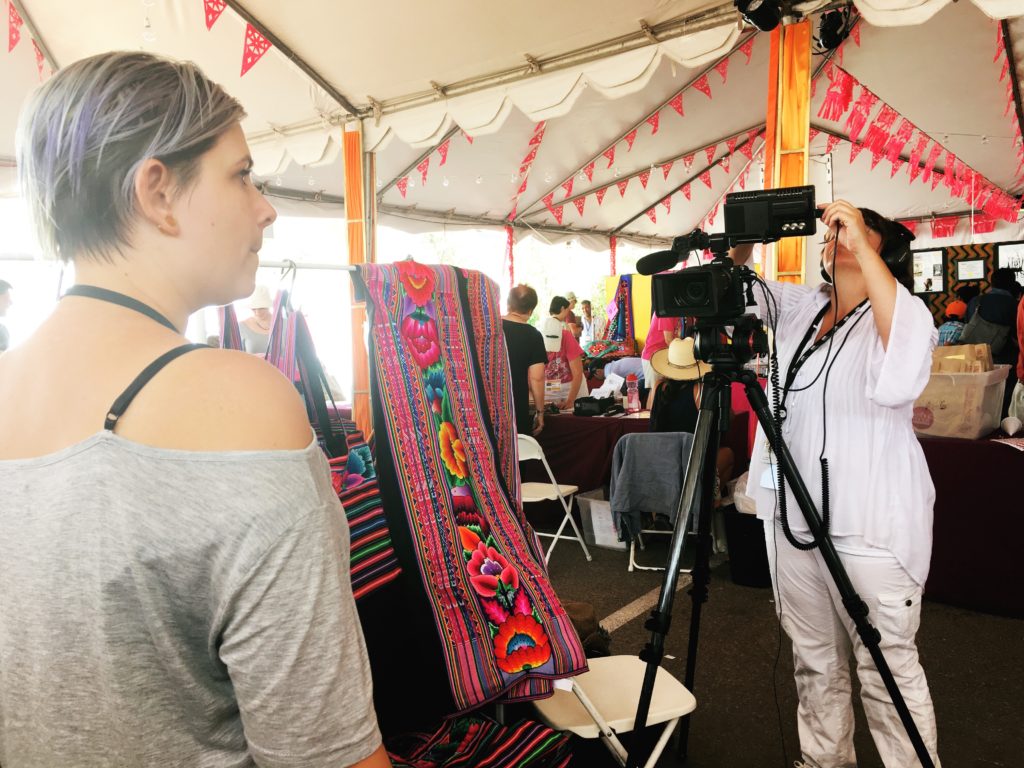Yesterday, some women outside the jewelry class came over to observe what the class was making and, as they talked about which pieces they liked and why, one woman looked up from her work and said, “These are works of art.”
I want to take a minute to talk about value. When I started Ruraq Maki in 2009 the women were undervaluing their work. In 2011 we did a formal cost analysis and discovered that they were pricing their items for less than the cost to make them. This was partially due to a knowledge gap about pricing, but also due to an undervaluing of the craft and skill that went into their products. Over the years, I had had the privilege of watching the women’s journey towards a genuine sense of value and pride in their work.
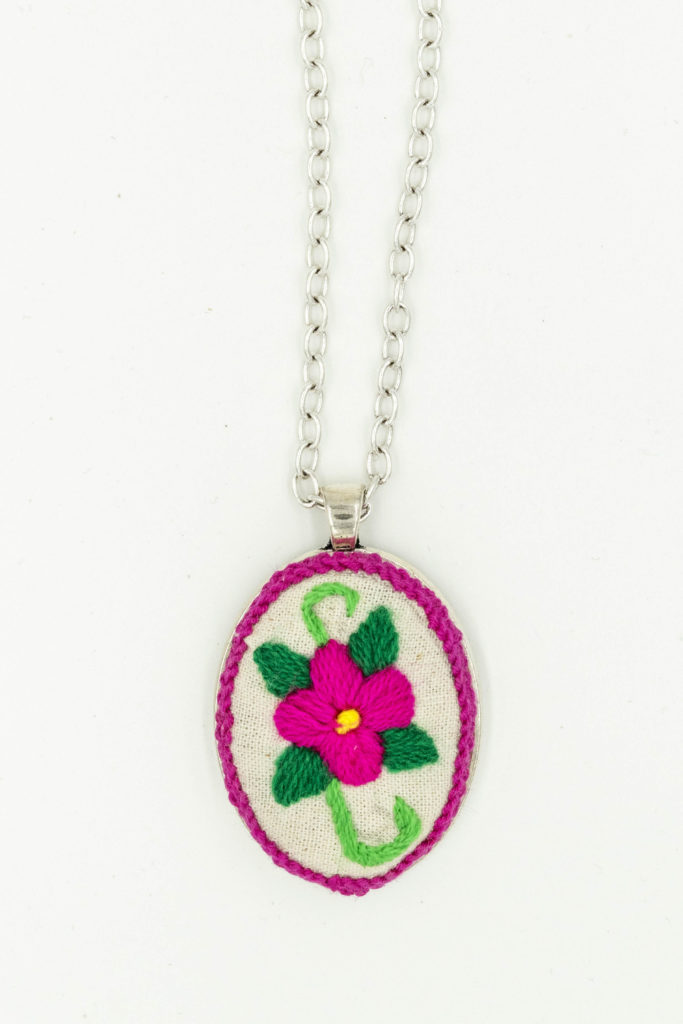
Embroidered pendant by Lucila
The woman’s words yesterday, “These are works of art,” is another step in that journey. Something is shifting and the women are seeing their goods as something larger than what they do day in and day out. As they push the boundaries of how they use their skills, they are seeing the art, the craft, and the expertise that they bring to their work.
Why is this important? Because this shift in viewpoint happens on a larger level. The deeper appreciation of their work leads to a deeper appreciation of themselves. They are no longer just women in prison, they are artists. Though the International Folk Art Market, they became global experts and technicians in the Ayacuchan embroidery. Through the jewelry making, they become creators of works of art. They are becoming something more than they thought, but what they have always been. Embracing their intrinsic value as artists, mothers, women, and humans paves the way for possibility, for the capacity to dream, and for their future.
